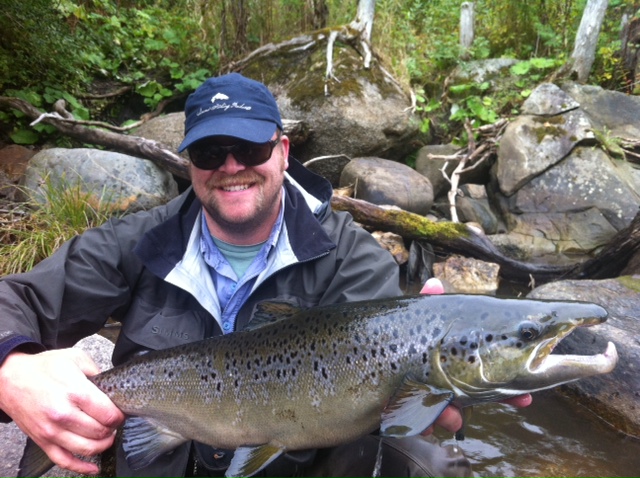Fly fishing by nature is a challenging sport. But for many, it’s the huge learning curve that makes the sport so intriguing. After all, to progress we must hone our skills and be always in search of new techniques. Tight-line nymphing is one of those skill sets that all of you river and stream trout anglers should be familiar with. What is tight-line nymphing? Some terms you may be more familiar with are Euro nymphing, Chez nymphing, drop-shot nymphing, competition-style nymphing and so on… All are very similar in approach and technique but for the sake of argument we are not going to split hairs, rather we will focus on a more general overview. So the simple definition is… casting nymphs upstream and drifting them back toward your position without the use of a suspension device, aka bobber.
Here is how it works. When we cast flies upstream of us they immediately begin moving back downstream when they hit the current, and in turn create slack in the line. The goal with tight-line nymphing is to not allow that slack to form. This is accomplished by leading the flies through the drift with the position of the rod and matching the speed of the current with the speed of the lead. If done properly the flies will always be at a fixed length from the rod tip and moving naturally through the drift, not being pulled through the drift faster than the current. Your drifts will generally be fairly short due to fishing with a fixed length of line, making this method ideal for steeper gradient, faster moving, pocket-type water.
Now that you have a basic idea of the approach and nature of the technique, let’s talk a little about the set up. As I mentioned before you will be fishing a fixed length of line. This means instead of letting more line out to reach a spot, you will have to move into position by wading to line up each drift. Here is a good set up to start out with. First, a rod of 9′ or greater is a must and in weights of 2wt to 6wt. My rods of choice are 10′ 3wt or 10′ 4wt.
For a leader, start with a tapered 9′ 0x. Then attach some sort of brightly colored line, about 20″ in length. This will be your indicator line, also referred to as a sighter. This is the focal point that will help you to see strikes. Hi-vis mono, backing, or a bi-color indicator line works great for this. The indicator line should be close or the same in diameter as the 0x at the end of the leader. From here we go directly to the tippet. I will generally run fluorocarbon tippets between 4x and 6x depending on the given situation. Because there is a substantial difference in tippet diameters at this connection, there are fewer knots that will effectively connect these two lines, so a tippet ring is an easy solution to this problem. Tippet lengths will vary and should have an overall length, from the indicator line to the anchor or point fly, slightly longer than the deepest water you will be fishing that day. For now let’s take 30″ of 5x and tie it to the tippet ring. Take another 30″ of 5x and attach it to the first piece about 20″ down from the tippet ring wit a surgeons knot. You should now have a short tag end and a tag about 10″ long. Cut the short tag and tie a lightly weighted nymph or emerger to the long tag. This is your off-line dropper. Now tie a heavily weighted nymph to the tippet end furthest from the tippet ring. This is your anchor or point fly. Now you are set up.
Now to cast and fish the rig. Remember with tight-line nymphing, you should always be casting upstream, leading the flies with the rod as they drift toward you while not allowing slack to fall into the line. From the tippet ring to the point fly should remain in the water through the drift, and the angle that the leader system enters the water should change as the water depth does. In very shallow water the angle the line enters the water should be shallow, in turn putting both the anchor and dropper flies at fish level. In deep water, the angle the line enters the water should be steep, in turn putting the anchor fly at fish level and the dropper fly suspended in the water column. The angle the line enters the water on should be varied accordingly, based on water depth. When casting, the flies should pulled from the water and re-cast before passing downstream of your position. Your casting stroke should be limited to a strong pick up to back cast, a defined pause, and a forward cast to present again. This will help to limit tangles and increase the time the flies spend in the water (where the fish are).
This is just a quick crash course on tight-line nymphing. Give it a try and see what happens. If you really want to get dialed in on the tight-line nymphing game, then give me a call to book a day on the water. It’s a useful tool to have in the box. Josh


